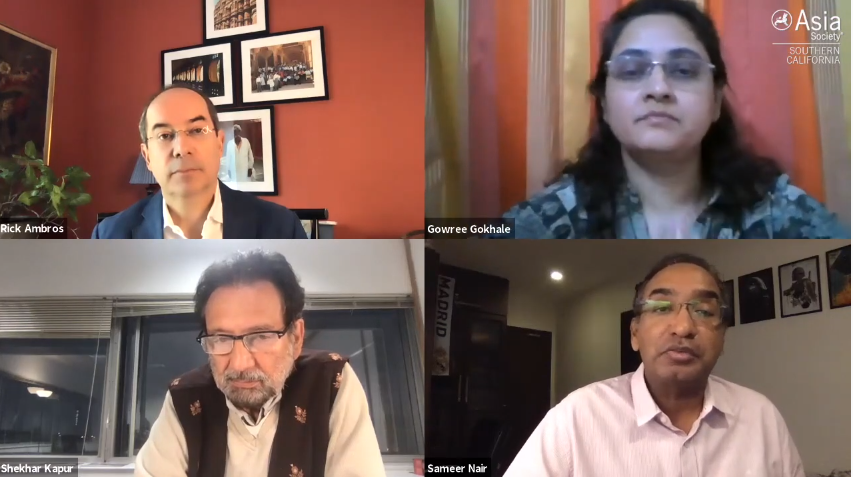
Courtesy of Applause Entertainment
Since the start of the pandemic, the audience’s consumption pattern has transitioned drastically, with more people turning to their smartphones to watch movies as theatres have taken a hit. This has prodded the digital landscape to pick up faster and streaming platforms across the world to acquire a fresh audience base.
To bring these changes to light and platform an insightful discussion, the Asia Society, Southern California, the leading educational organization dedicated to promoting mutual understanding and strengthening partnerships among peoples, leaders, and institutions of Asia and the United States in a global context, orchestrated a discussion on ‘Cinemas to Smartphones: Streaming Wars and the Future of Bollywood and India Content’.

The discussion was a part of the 11th U.S.-Asia Entertainment Summit, which attracts the most important and interesting speakers in U.S. and Asian entertainment. The country in focus was one of the largest consumer markets in the world, India. To represent the country on a global scale, Sameer Nair, CEO – Applause Entertainment, the content arm of the Aditya Birla conglomerate, shared his insightful perspective on the topic. Other eminent panelists in the discussion included the director, Shekhar Kapur, and entertainment lawyer, Gowree Gokhale.
The platform is known for providing insights, generating ideas, and promoting collaborations across the fields of arts, business, culture, education, and policy to address present challenges and create a shared future.
Sameer at the lecture series highlighted the impact of COVID in India, the streaming industry, the future of television, and the big opportunities lying in India. Following are the excerpts:
OTT landscape development in India
“This period is a lot like the early stages. It is more like the 90s for what it was for television in India with a whole bunch of channels coming up with a number of players and investors. Here we have a potential 500 million audience base and the streaming platforms have touched around 20 million, so it is a long way to go. India is a large market connected with smartphones and broadband connectivity, cheapest data in the world, already savvy with television and film, so this is a growth phase where there will be a lot of investment as we essentially move audiences from television to streaming.”
Importance of theatre in the industry
“Theatrical revenue is a significant revenue stream as when we draw a comparison between 9000 theatrical screens versus 900 million smartphone screens, we miss talking about the fact that the 900 million smartphone screens are not going to generate the sort of revenue as compared to what the country can potentially generate theatrically. So, taking the theatrical experience off the market translates to a significant economic change and you are also leaving a great chunk of retail revenue on the table. I think streaming platforms can compensate for those 80-100 billion dollars to offset the theatrical revenue loss.”
The Future of Television in India
“The linear television industry in India has reached 197 million TV and cable satellite homes. There is about 10-15 million more to go and it is now scraping the bottom of the barrel. As every content platform and every technology creates a content habit, TV was the classic talking to the consumer technology and it told you to watch your favourite shows at specific time slots so you had to reorder your life accordingly. On contrarian grounds, streaming platforms made content available to you whenever you want it, and that has been one big change in consumer habits. Also, the way TV is going, I think it is going to play out. It is ad and subscriber dependent and it reached its scale. This is a decade where we will be able to see a gradual transitioning out of typical linear television to streaming platforms and then moving on to even more dramatic technological advancements.”
Success of Scam 1992: The Harshad Mehta Story
“People watch programmes not channels, and in a way how people watch movies and go to theatres because of the ambiance, similarly now with platforms or with any form of content, people are more drawn to individual experiences and a collection of that content makes a platform. So there are things that can stand out, so that piece of content could succeed but for that platform to succeed the offering is much larger and deeper as eventually, they depend on a subscription model or they want their customers to come back again and again. I think that while people watch shows and individual content, so for platforms to succeed they need lots of those.”
The series is available on the YouTube channel of Asia Society.








